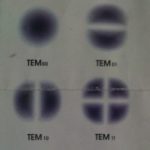- This topic has 19 replies, 5 voices, and was last updated 9 years ago by
Philip Weetman.
-
AuthorPosts
-
-
November 17, 2015 at 4:13 pm #27839
 alistuParticipant
alistuParticipantHi all,
In OptiSystem power combiner, the output power (measured by optical power meter) equals more or less the power of each of the inputs. In other words, the power combiner component does not add power of all its inputs, it calculates their mean. So if there are two inputs to the power combiner each 10dBm, the output would not have 13dBm power, but 10dBm. I would like to know if this is the case with real power components in optical systems (I would be grateful if Optiwave team kindly answer this, as it somehow relates to how components have been modeled).
While power combiner has such a characteristic, optical MUX (and also ideal MUX; but I am not talking about ideal MUX right now) does not behave in this way (if we have two 10dBm inputs, the MUX output would have 13dBm power). So if I am to compare the performance of two access systems with two different schemes (one using combiners and one using MUX) in terms of launched power, do I have to use ideal MUX (which adds signals without calculating their mean power) instead of combiners? Thank you very much in advance.
Regards,
Alistu -
January 19, 2016 at 3:17 pm #29225
Philip Weetman
ParticipantHi Alitsu,
As of OptiSystem 14.0, the power combiner and the ideal MUX will now both simply add the powers. In fact at multiple wavelength input, the power combiner will act exactly like an ideal MUX. Of course, the power combiner can also add signals of the same wavelengths.
The previous method for the power combiner was based on a Wilkinson power divider/combiner model which we decided wasn’t appropriate.
-
November 27, 2016 at 7:15 am #41728
 K. Esakki MuthuParticipant
K. Esakki MuthuParticipantDear Philip Weetman,
The power reduction problem found in the earlier versions are rectified in the Optisystem 14. However, a new problem has emerged now, the power combiner in version 14 just simply combines two signal as it is but it is not responding to the phases of the input signal ( Version 12 and 13 does not have this problem). Kindly let me know how to solve this.
Thanks in advance
-
November 28, 2016 at 9:22 am #41734
Philip Weetman
ParticipantHi Esakki,
Thanks for the input about the phases. I will take a look at it. Feel free to email me at Philip.Weetman@optiwave.com and we can discuss it further.
-
December 1, 2016 at 2:18 pm #41773
 K. Esakki MuthuParticipant
K. Esakki MuthuParticipantDear Philip Weetman,
Let us discuss.
Thank you
Best Regards,
K.Esakki Muthu -
December 2, 2016 at 10:23 am #41777
Philip Weetman
ParticipantHi Esakki,
Let me sketch out the way the power combiner works right now.
Assume we have a 2 port combiner with signals only at a single carrier frequency. Let E1(t) = A1(t)exp(jwt) and E2(t) = A2(t)exp(jwt). Where E1(t) is the input field in port 1, E2(t) is the input field in port 2. The carrier frequency is w. Thus the modulated amplitude is A1(t) for port 1 and A2(t) for port 2. The phase information is carried in A1(t) and A2(t) by allowing them to be complex numbers.
Now, if you require power to be conserved, the output port field cannot simply be Eout(t) = E1(t)+E2(t) = [A1(t)+A2(t)]exp(jwt) because (ignoring other factors) Pout = |A1(t)+A2(t)|^2 which will not equal Pin = |A1(t)|^2 + |A2(t)|^2. Therefore, for power conservation, the output field will have to be renormalized so that the output field is instead Eout(t) = N(t)[A1(t)+A2(t)]exp(jwt).
It turns out that there are actually physical reasons why the normalization factor N(t) exists and you can show (for example) for a symmetric waveguide Y-junction, N(t) = 1/sqrt(2). The problem here is that the power combiner is not a specific physical device, but an idealized model. In fact, one of our BPM and FDTD experts is at the moment looking at designing a physical-based power combiner device.
So the question then becomes, what are you going to use for the normalization factor? The way it works right now is we define
N(t) = sqrt(|A1(t)|^2 + |A2(t)|^2)/|A1(t)+A2(t)| (***of course with checks to make sure we are not dividing by zero***). From the argument above, you see that indeed power will be conserved when you use this as this is simply the factor by which the power is off by. However, as you quite rightly point out, the phase information is lost. Dividing by |A1(t)+A2(t)| essentially “normalizes out” any phase difference.If you divided by ||A1(t)|+|A2(t)|| instead, you will retain phase information. That is, if both signals are in phase, Pout = Pin as above, but if the signals are 180 degrees out of phase, Pout = 0. I have tested this and it works. If you have some phase in between 0 and 180, you will have 0<Pout<Pin as you would expect. Now, is this a reasonable normalization? It works as you would expect for phase differences of 0 and 180 deg and gives you qualitatively what you’d expect for phases in between. It is also becomes the correct factor of 1/sqrt(2) in the perfectly symmetric case. Maybe its the best we can do?
I have tentatively modified the power combiner to have 3 options:
1. The old method: N(t) = sqrt(|A1(t)|^2 + |A2(t)|^2)/|A1(t)+A2(t)|. For users who want to enforce power conservation in all cases.
2. The phase-dependent method N(t) = sqrt(|A1(t)|^2 + |A2(t)|^2)/||A1(t)|+|A2(t)||. As discussed above, doesn’t always conserve power.
3. The symmetric device N(t) = 1/sqrt(2). Only conserves power when both input signals have identical amplitudes and phases. This is analogous to Wilkinson power divider/combiner.
I have also made similar modifications to the other combiners with more ports with the appropriate sums of amplitudes and powers over all ports. The symmetric device is now N(t) = 1/sqrt(n).
Sorry about writing all the equations inline, I didn’t want to attach a multitude of image files!
Thoughts?
-
-
-
January 19, 2016 at 4:32 pm #29227
 alistuParticipant
alistuParticipantThank you very much for your helpful reply.
Regards
-
February 26, 2016 at 12:37 am #30221
 aasif bashir darParticipant
aasif bashir darParticipanti have simulated the .osd file. and results are very much correct.
i have used the power combiner, with two laser inputs of power 10 dbm (10 mW) each and the output of the power combiner is 13 dbm(i.e 20 mW).
-
February 26, 2016 at 12:38 am #30223
 aasif bashir darParticipant
aasif bashir darParticipanthi alistu,
i have simulated the .osd file. and results are very much correct.i have used the power combiner, with two laser inputs of power 10 dbm (10 mW) each and the output of the power combiner is 13 dbm(i.e 20 mW).
with regards
-
November 27, 2016 at 7:01 am #41726
 K. Esakki MuthuParticipant
K. Esakki MuthuParticipantThe power combiner works well in Optisystem version 14. But now it has become phase insensitive.
-
-
February 26, 2016 at 1:03 am #30227
 aasif bashir darParticipant
aasif bashir darParticipanthi alistu,
whilst i have also simulate the same .osd file with ideal mux.the two inputs have the power of 10dbm (Ii.e; 10 mw),the output of mux is 15 dbm(i.e 34 mW). which is wrong because if the total input power is only 13 dbm , how could the output power be 15 dbm.hence i must say that we can not use ideal mux as power combiner.MUX does give large power , but not as per the logic.besidesmux can noit be used for single wave length.
with regards
-
February 26, 2016 at 1:09 am #30233
 Aabid BabaParticipant
Aabid BabaParticipanthello everyone.
i agree with asif. When you are adding power using a power coupler, it is log addition. Simply convert power at inputs into miliwatts and then add. Suppose you take two lasers of 10 dbm power which means 10 milliwatt each. It should give you 40 milliwatts at the output which is equal to 13dbm.
I believe asif has shown you correctly.
regards -
February 26, 2016 at 6:04 am #30281
 alistuParticipant
alistuParticipantHi Aasif/Aabid
As Philip has clearly stated, the problem exists in OptiSystem 13 and older versions. So if you are using OptiSystem version 14, this problem is not there. Arpita was making use of OptiSystem 13 (or older) in the design, so that was why I gave that suggestion. If only you had paid more attention!
Regards
-
February 26, 2016 at 6:20 am #30285
 Aabid BabaParticipant
Aabid BabaParticipantHello alistu,
Philip had mentioned that Ideal Mux can be used as a power combiner but i don’t think so. Mux logically Multiplexes various signals assigning different time slots but the switching is so fast that it appears it is multiplexing simultaneously. In optiwave, i can’t see Mux used as power combiner. Whenever i use MUx for multiplexing , the power levels are dropped but that is not the case with power combiner. It works as it is supposed to work.
Thanks anyways. Feels good to discuss things. -
February 26, 2016 at 6:29 am #30286
 aasif bashir darParticipant
aasif bashir darParticipanthi alistu,
still we can not use MUX as power combiner. MUX is for multiplexing. whether itz older versions or new version muX is for multiplexing not for power combining.
thanks anyway for your valuable reply alisturegards
-
February 26, 2016 at 7:18 am #30293
 alistuParticipant
alistuParticipantWhile the performance of the “Ideal MUX” is EXACTLY the same as the power combiner of OS14 according to dear Philip, one of Optiwave research scientists, unless we have a problem with the name of ideal MUX, I believe we can use them interchangeably. This is why I actually started this topic… to make sure if that was OK.
Cheers!
-
-
February 26, 2016 at 8:38 am #30304
 aasif bashir darParticipant
aasif bashir darParticipanthi alistu,
optiwave research scientist should please have look on such problem.regards
-
February 26, 2016 at 8:51 am #30308
 alistuParticipant
alistuParticipantHe actually has! What I mentioned were his exact words from this very page! His reply is the first reply in the topic. I believe it is OK to have doubts about something, but it is definitely not OK to make firm suggestions to other members when you have doubts in the first place.
Regards
-
-
February 26, 2016 at 9:03 am #30313
 Aabid BabaParticipant
Aabid BabaParticipantThank you asif and alistu for sharing wonderful thoughts. It is really good to see people discussing and sharing ideas. Cheers!
I hope we continue to learn and share.
-
-
AuthorPosts
- You must be logged in to reply to this topic.

